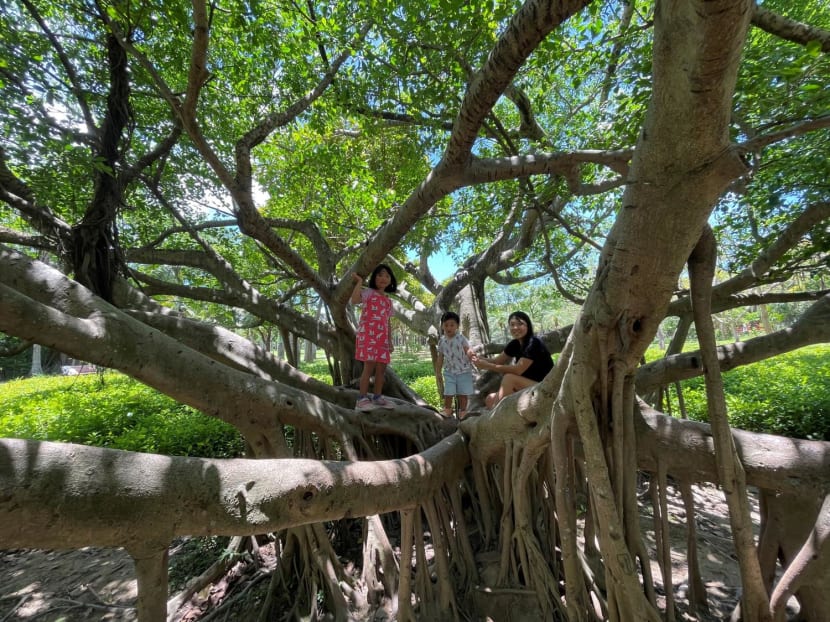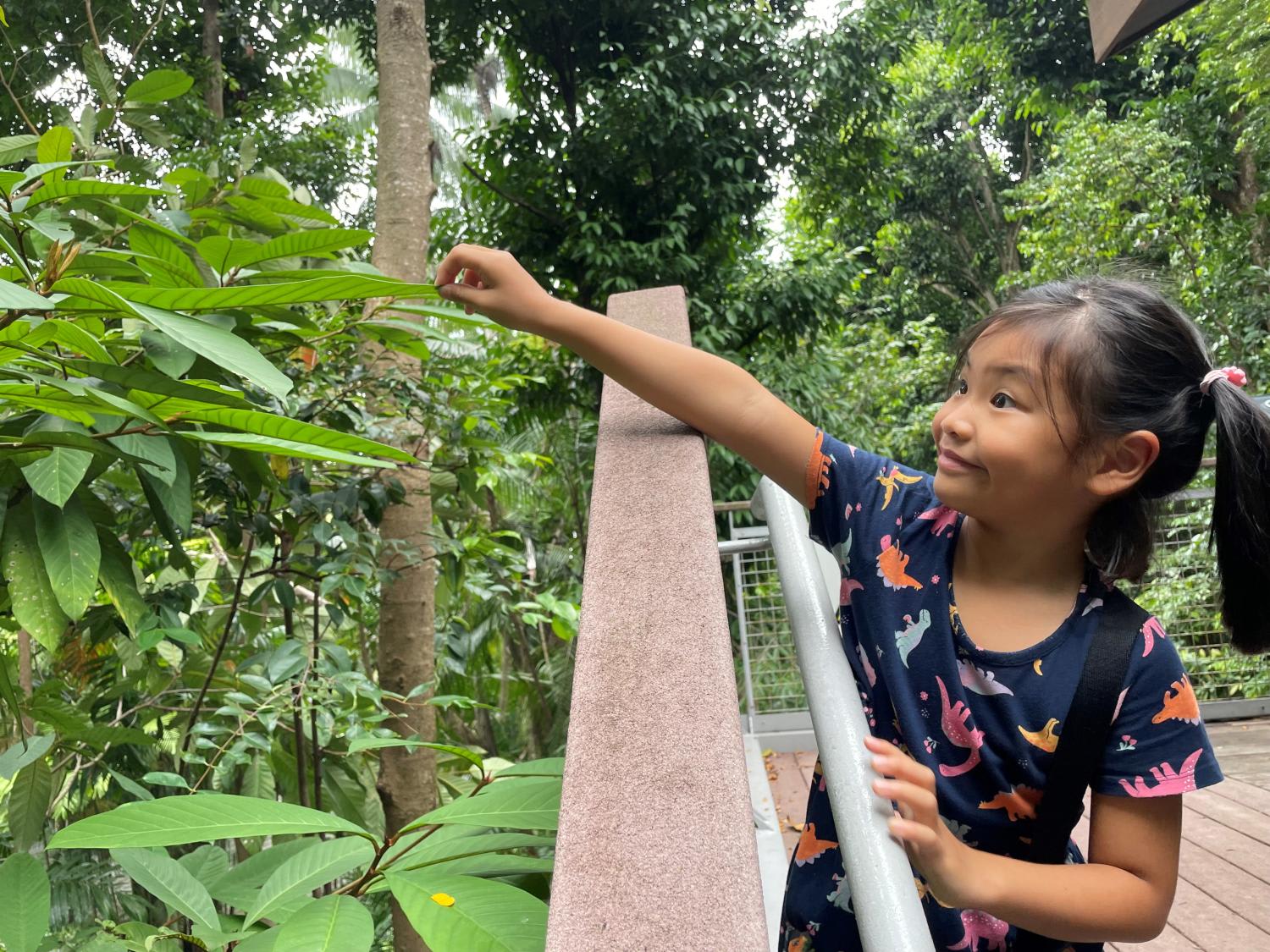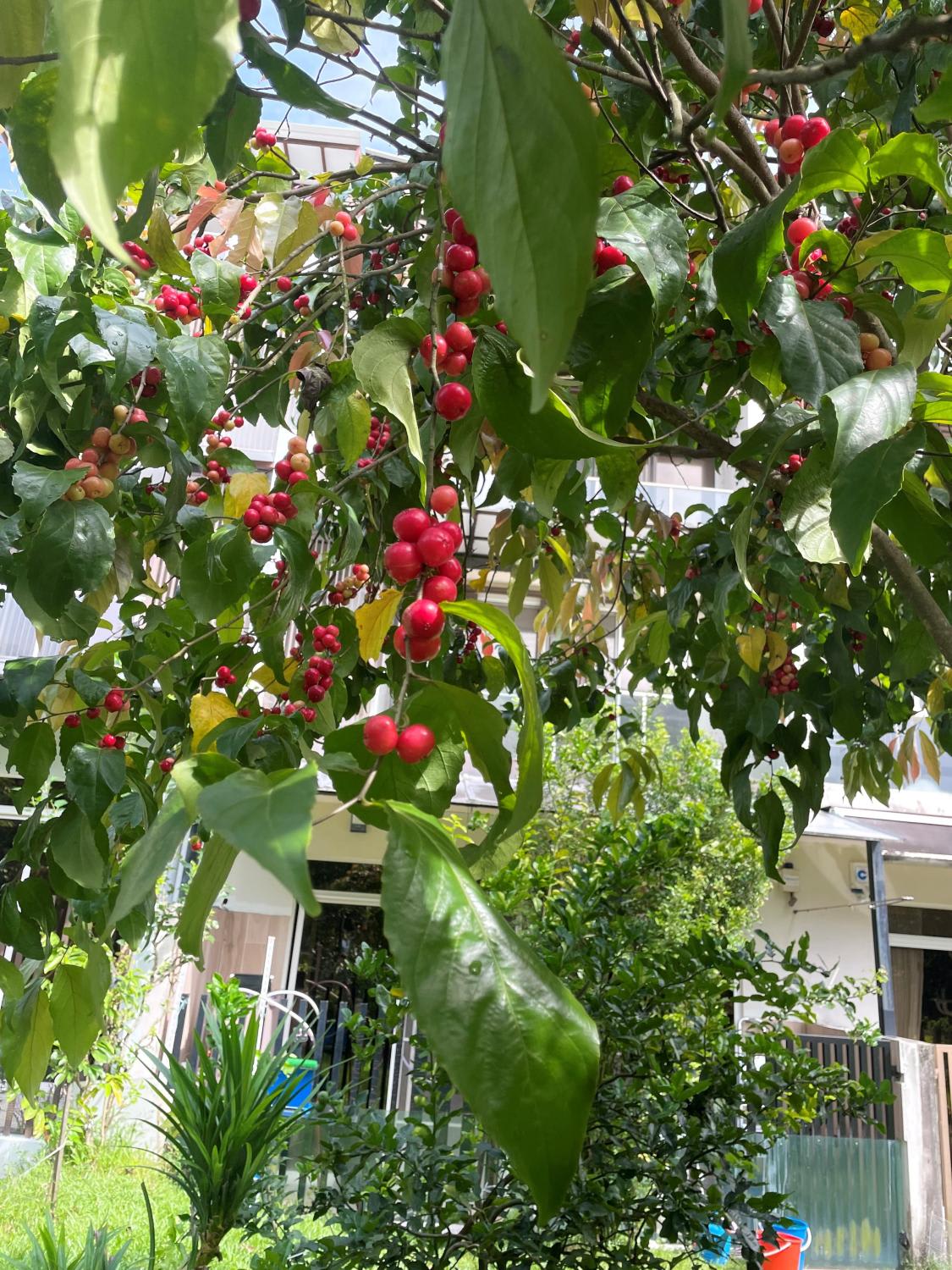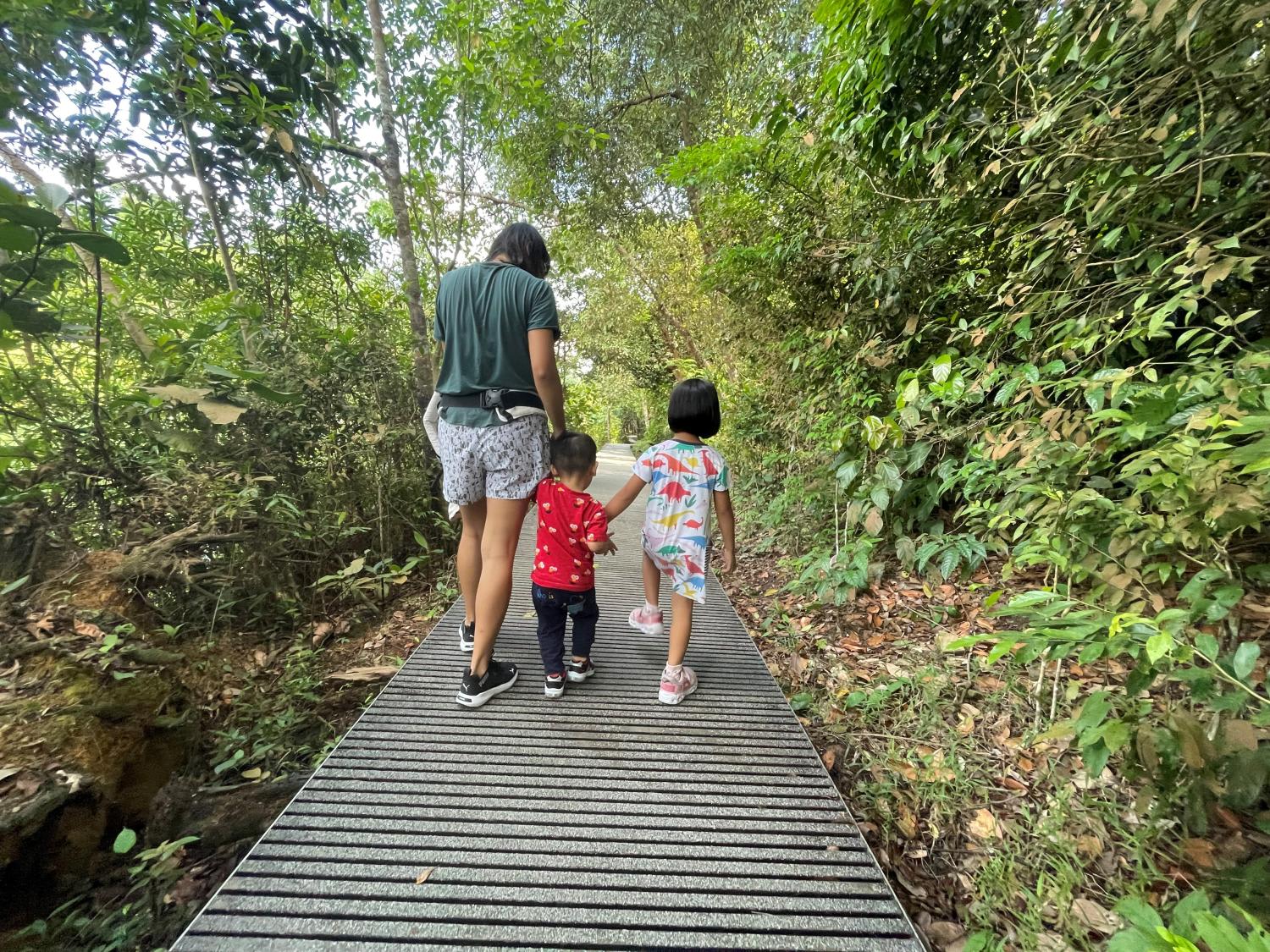Commentary: How I use Singapore's flora and fauna to wean my children off their digital devices

The author's family posing with a fig tree.
“Did you know that the purple petals of the Bougainvillea are actually its leaves?” my six-year-old daughter asks strangers passing us on an overhead bridge, where the iconic ornamental plant hangs over a road.
It’s a fun fact I recently taught my child about the plant — a grain of knowledge through which I hope to seed in her a sense of connection with the wider world, as well as an understanding of how she fits into it.
We should start by weeding out a common misconception: That Singapore is nothing but a concrete jungle, where the nature scene is boring and every tree looks the same. In reality, there are over 400 parks across the country which offer a vast variety of terrains and habitats to explore, even in highly urbanised areas.
In Punggol, for example, unique birds and insects can be found all over — from artificial floating wetlands in the waterways, to hanging gardens in the town centre.
In the central areas, buffer parks such as Chestnut Nature Park and Thomson Nature Park help form a vast corridor for wildlife to travel across habitats.
Much of the greenery found in Singapore — in parks, park connectors and even along roads — have been carefully curated for the benefit of her residents, human and animal alike.
From trees with spiky trunks or perennial autumn leaves to flowers that only emit fragrance at night, every plant has a unique story to tell — from where they came from, to why they were planted, as well as changes in the landscape that they silently bore witness to across the decades.
By unlocking these secrets, parents and caregivers grant their children access to a vast natural classroom. The outdoors offer valuable learning tools that can be used to teach children meaningful lessons not just about nature, but also the society we live in.
EMBRACING DIVERSITY FROM A YOUNG AGE
Dating back to British colonial rule, Singapore has a history of planting species with interesting characteristics that sprout intrigue and conversation. For example, Caroupita guianensis, more commonly known as the Cannonball Tree, was introduced because its fruits and flowers grow from the middle of the trunk, instead of its branches.
Just as we cherish “strange” plants that have leaves as petals, we should also embrace — and teach our children to embrace — the fact that Singapore is made up of people of different cultures, abilities and physical appearances and conditions.
Every plant and animal has its own unique role to play in our ecosystem; In the same way, there is a place for each of us in Singaporean society, regardless of our differences.
A VIABLE ALTERNATIVE TO SCREEN TIME
My kids were once like most other children — badly addicted to various forms of screen entertainment (“educational” ones included). As I brushed up on my knowledge of Singapore’s flora and fauna, I began to wean them off devices.

Instead of letting them play games or watch videos on my phone in the car — previously a convenient hack to get us to our destination with minimal fuss — I introduced them to the simple game, I Spy with My Little Eye. The answers started out generically — “tree” or “flower” — but over time, as their interest grew, we progressed to the names of specific species.
My wife and I also use common plants in our housing estate to make a game out of learning numeracy skills. The Mimosa, a shy weed that folds its leaves when touched, has become an organic alternative to the game that my daughter used to play on my phone, which involves popping virtual balloons with her finger while counting them.
A STAKE IN THE WORLD
In Singapore, one doesn’t have to look far for new wonders to engage young minds. Just the other day, I came across several Flacourita inermis (Thornless Rukam Trees) in a neighbourhood park. They produce bright cherry-like fruits that are popular with wild parrots, which my kids were intrigued to observe.


The fact that our children can now enjoy easy access to a vast variety of local biodiversity is a testament to the Republic’s efforts to intensify greening efforts across the country. The Green Plan, launched in 2021, aims for every household to be within 10 minutes’ walking distance from a park by 2030 and for the number of trees to exceed eight million.
But we must guard against natural tendencies to take good things for granted.
Recently, my daughter and I have made a new pastime out of finding and collecting seeds of the Tabebuia rosea, commonly referred to as the Singapore Sakura Tree because of its vibrant pink flowers. Its seeds have transparent wings that remind me of the Golden Snitch from the Harry Potter books. They burst out of fruit pods when they are in season.
However, these seasons have become increasingly difficult to predict due to increased rainfall. And it’s not just Singapore that’s experiencing this.
In October 2023, I followed a special expedition by a group of horticulturists to Latin America where they sourced plants for a new garden in Singapore. We were hoping to catch certain trees in bloom — but were disappointed to learn that nature had postponed their flowering period.
This has prompted me to teach my kids about the worrying effects of climate change. I tell them about how carbon emissions from everyday activities, from using electricity to driving cars, have contributed to higher temperatures — leading to warmer oceans and more water vapour in the air, which in turn spells heavier rainfall.
Equipping children with this relatively simple knowledge helps them rationalise and internalise steady habits like turning off lights and fans when they are not in use, and why there’s no need to buy a new toy if their current one isn’t broken.

OVERTURNING APATHY
In our modern, tech-driven world, many are naturally and understandably apathetic towards nature. My kids used to detest being outdoors because they found the weather too hot. We even wondered, for a time, if our eldest might have obsessive-compulsive disorder because she used to be afraid to touch leaves and soil.
But children are more adaptable than we give them credit for. It’s us, as parents and caregivers, who need to be resilient and not stray from the trail.
If you’ve decided to bring your kids to a park for a healthy dose of sunlight or fresh air, stick to the plan and tune out any protests and whining. Instead, engage your kids’ focus by making random and exaggerated observations about your surroundings.
Helping our kids understand their natural environment is more than just a cheat sheet for explaining complex issues such as climate change. It helps them to see that they, too, have a stake in the future of our planet.
By putting a name to a flower or tree, they establish a budding relationship with it, which in time could blossom into a sense of stewardship and responsibility, not just towards the environment but the society they live in.
ABOUT THE AUTHOR:
Charles Phang is a father of three and a senior producer with CNA’s documentary team, specialising in sustainability, culture and geopolitics.








